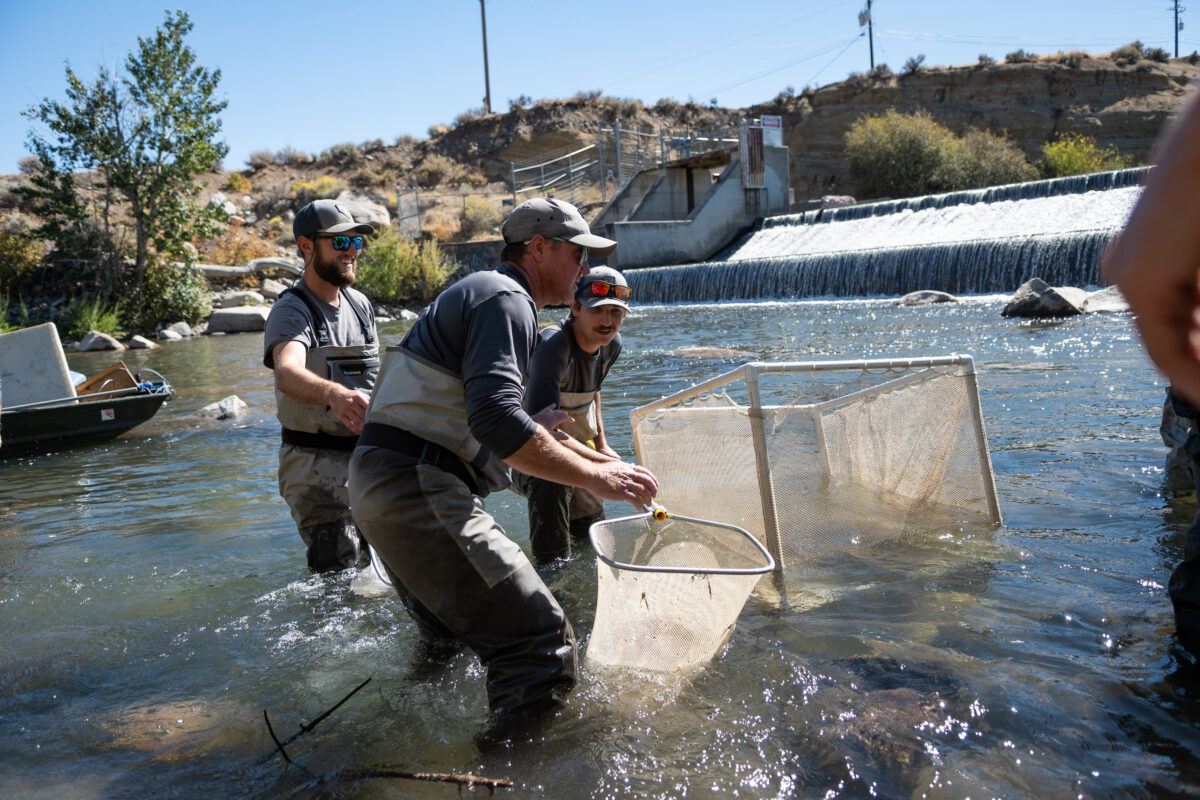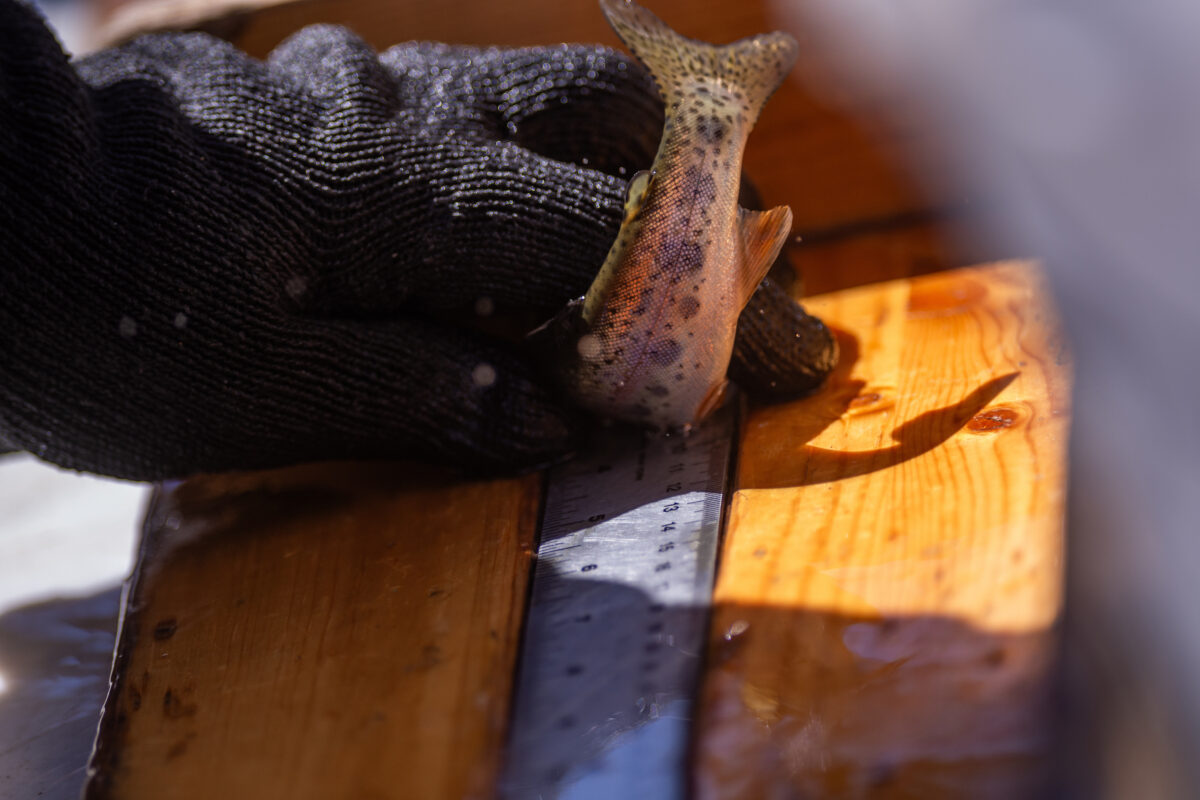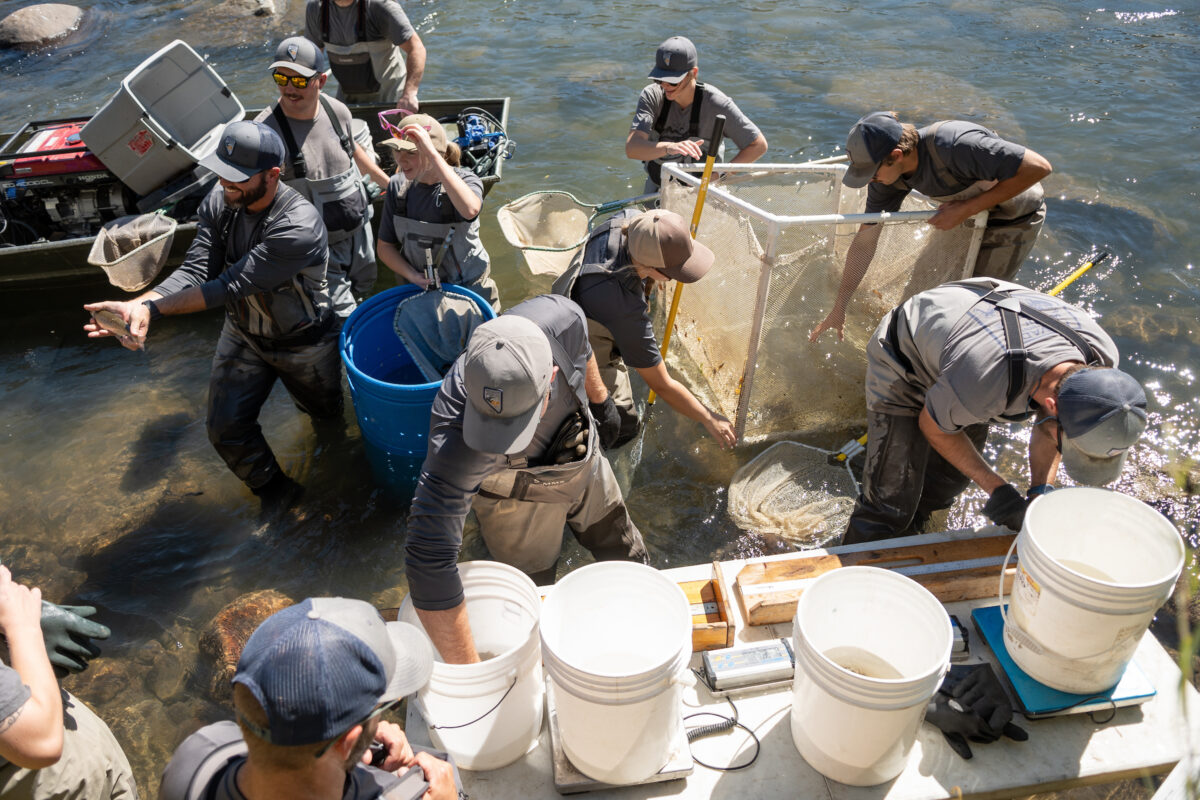For thousands of years, Lahontan cutthroat trout swam in the expansive waters of Lake Tahoe.
But by 1938, the fish — affected by European settlers’ actions in the Tahoe Basin by such as logging, overfishing, construction of dams and water diversions, and the introduction of non-native species — disappeared.
European settlers offset the lack of large fish by stocking Lake Tahoe with non-native species but for decades, the lake was devoid of Lahontan cutthroat trout.
A Nevada Department of Wildlife (NDOW) project is changing that.
Biologists studied non-native Rainbow trout — similar in many ways to Lahontan cutthroat trout — to understand their spawning patterns in Lake Tahoe. What they saw gave them hope that a self-sustaining population of Lahontan cutthroat trout could return to the lake in a limited capacity, and they began a multiyear reintroduction and monitoring effort. This year, Lahontan cutthroat were documented exhibiting spawning behavior in a tributary of the lake — the first unassisted attempt in Lake Tahoe in nearly 90 years, according to state biologists.
That effort by the Lahontan cutthroat trout (LCT) — the state fish of Nevada known for its ability to grow as long as 4 feet — is exciting for biologists and sportsmen alike. It is also an important step in the “recovery” of the fish, which is listed as “threatened” by the U.S. Fish and Wildlife Service.
“If we can get a few of these fish to spawn and reproduce … they can persist into the future without human intervention,” said Travis Hawks, fisheries division supervisor for the Nevada Department of Wildlife’s western region. “The ultimate goal of recovery is to get a species to the point where it can exist to be equipped to handle its environment and we don’t have to take care of it.”
The number of fish that exhibited spawning behavior in Tahoe’s Third Creek (in Incline Village) were few — 10 out of the roughly 200,000 that have been stocked during the last couple of years. But biologists expect to see those numbers increase.
“If we get 10 up there and three of them spawn … it will build upon itself,” Hawks said. “It really does have huge implications for LCT recovery.”
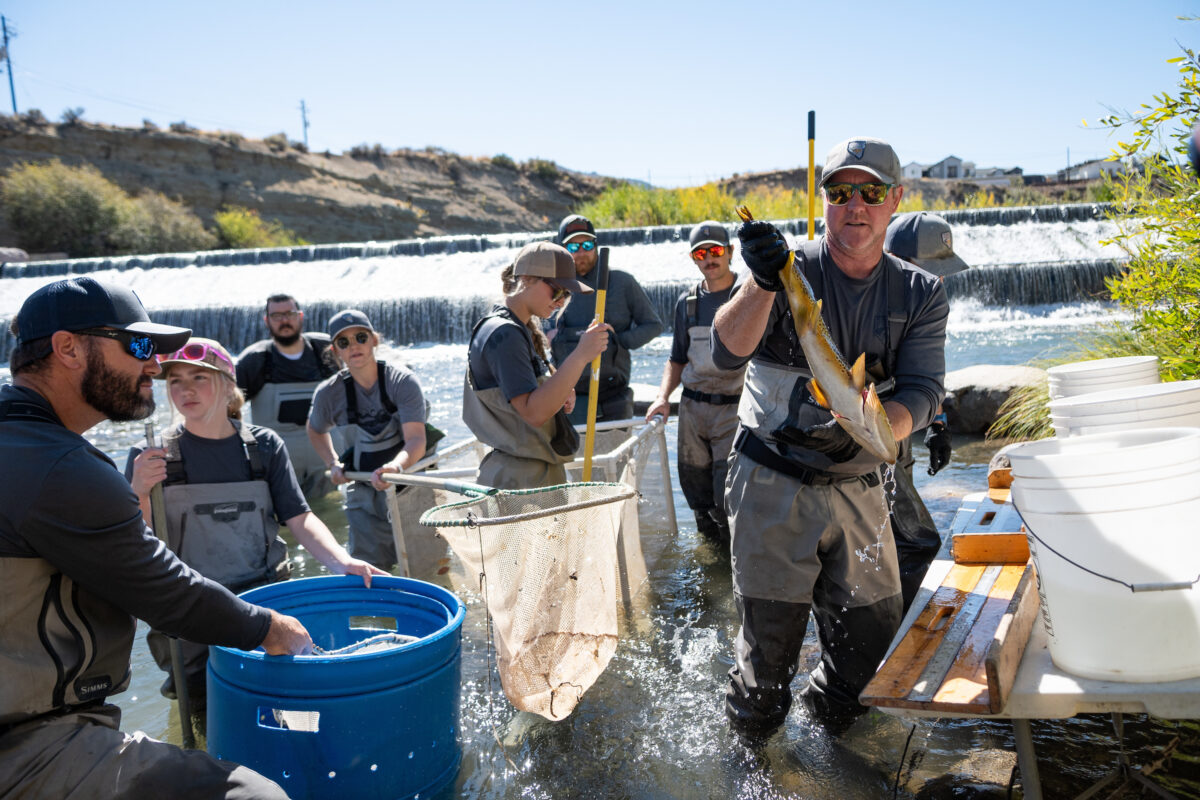
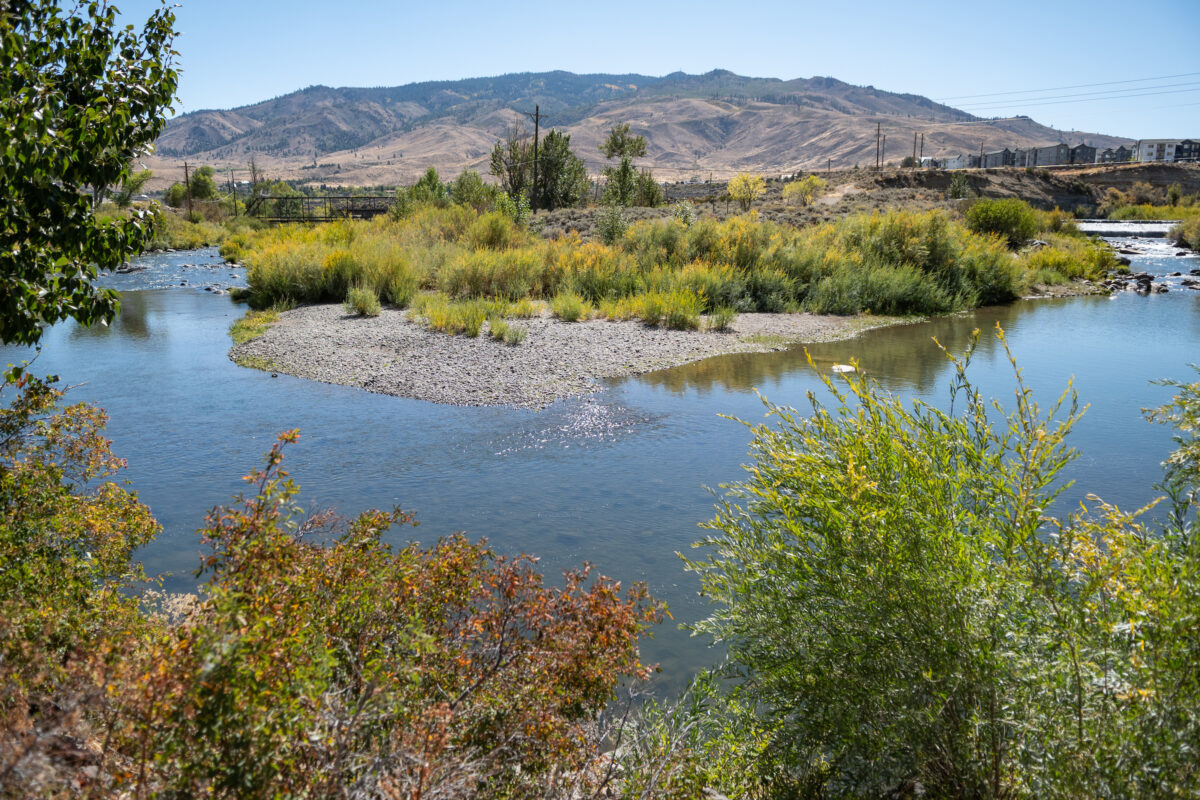
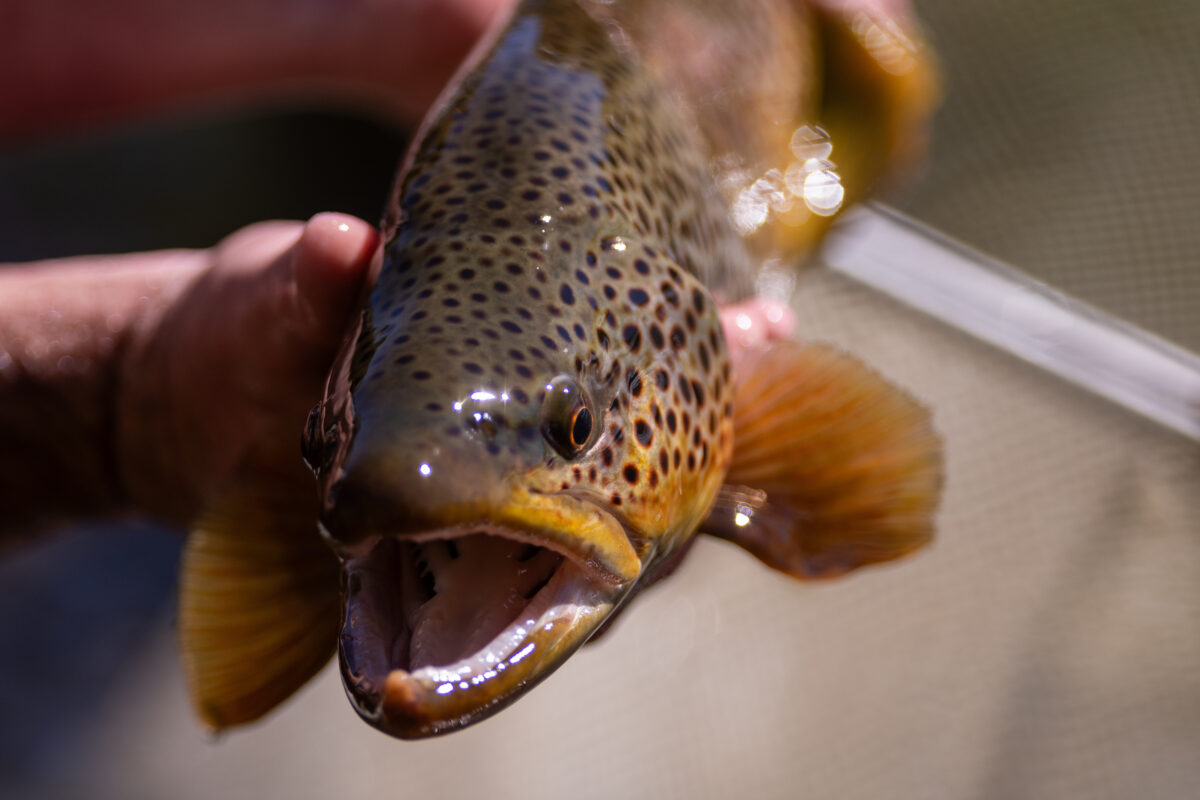
‘Proof of concept’
Since European settlement, more than 20 species of fish have been introduced to the Lake Tahoe Basin. As late as the 1990s, thousands of non-native fish were stocked in Lake Tahoe each year for sportsmen, but there was no real management of the lake as a thriving fishery, Hawks said.
“Tahoe was just a big dumping spot of fish,” he said. “The understanding of what was going on in Tahoe wasn’t there.”
As the understanding of Lake Tahoe as a thriving fishery evolved in the early 2000s, state wildlife officials started brainstorming how to restore Lahontan cutthroat trout (listed in 1970 as threatened) to Lake Tahoe — not by stocking the fish, but by carving out a space for the fish to carry out their natural life cycle, as they had before Western settlement.
The U.S. Fish and Wildlife Service had previously reintroduced Lahontan cutthroat trout to Fallen Leaf Lake — a small lake attached to Lake Tahoe via Taylor Creek — and reports that those fish have been spawning in Glen Alpine Creek since 2012. Lahontan cutthroat trout were also introduced to the Meiss Meadow area in 1990 by the service; Meiss Meadow is part of an interconnected stream complex within the upper Truckee River.
But recovery in Lake Tahoe hadn’t been attempted.
In 2014, state wildlife officials started studying spawning habits of rainbow trout to identify areas that could be suitable to reintroduce Lahontan cutthroat trout. Rainbow trout spawn at the same time of year and in similar habitat as Lahontan cutthroat trout, so wildlife officials captured rainbows spawning in Tahoe’s tributaries, tagged them, then removed their eggs to raise the young in a hatchery. The young raised in the hatchery were released back into the lake and their behavior was monitored.
Supporters credit Hawks, the state fisheries leader.
“Travis knew full well this was a perfect surrogate project for LCT. He just kept pushing forward,” said Jason Barnes, a biologist with Trout Unlimited who focuses on Lahontan cutthroat trout.
The experiment showed two things — first, that the adult fish they tagged were returning year after year to the same tributaries. And second, of the young raised in the hatchery, about 10 percent were returning to the same tributary they were removed from as an egg.
“Nobody had that data in the Tahoe Basin,” Hawks said.

Within a couple of years, state and federal wildlife officials reached an agreement to stock 2,000 Lahontan cutthroat trout in the lake to see if the fish would make their way into Lake Tahoe’s tributaries to spawn.
The number of Lahontan cutthroat trout stocked in Lake Tahoe has grown substantially during the past few years; this year, 100,000 were planted.
But hatchery-raised fish don’t thrive in the wild, Hawks said. They are planted for sportsmen and generally don’t survive year after year on their own.
Stocking fish is “pretty much a numbers game,” Hawks said, citing examples in the Truckee River. Each fall, Nevada Department of Wildlife staff does a fish survey to monitor the Truckee’s health. Held in late September or early October, the survey is just a few months after U.S. Fish and Wildlife Service stocks as many as 70,000 Lahontan cutthroat trout in the river for recreational fishing.
“We haven’t found more than, say, three [surviving] LCT that are stocked every year,” he said.
“It’s the difference between a farm animal and a wild animal,” he added. “You take a fish born and raised at a hatchery — it’s fed processed food and it’s released into a wild environment and exists in that wild environment for a time, but the odds of it really thriving and reproducing is really slim … 90 percent of them don’t survive.”
But the 10 fish that exhibited spawning behavior in Third Creek could be the start to a self-sustaining population of Lahontan cutthroat trout in Lake Tahoe.
“They have restored a lost function of LCT returning to a stream to spawn,” Barnes said. “You’re not just pulling fish out of a truck anymore. You’ve restored a function that has not been present for 100 years … It’s a proof of concept.”
A permanent structure will be installed on Third Creek to assist the Lahontan cutthroat trout. Fish swimming up the creek will not be able to make it past the structure; state wildlife crews will sort the fish, allowing Lahontan cutthroat trout to continue upstream while other species will be returned to the lake to spawn elsewhere. If left unsorted, rainbow and Lahontan cutthroat trout can mix to create hybrids known as “cutbows.”
“We understand we aren’t going to do this on every tributary,” Hawks said. “We aren’t going to get rid of all non-natives.”
But the agency can create what he calls “LCT refuge areas.”
“We have to shift our frame of reference and realize if we want LCT recovery, it’s going to be in the current environment and we have to consider what’s realistic and what we want to achieve,” Barnes said. “NDOW has proved this is one of the best outcomes we can get.”
